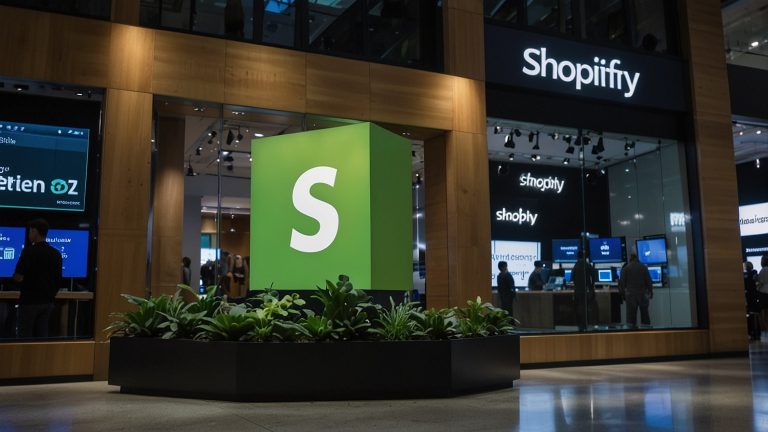Ethereum (ETH) was resilient in a volatile cryptocurrency market on October 16, 2025, by increasing by 1.15 per cent in the last 24 hours to be trading at approximately 4,031. This increase is a recovery after a liquidation event of up to 20 billion in the market earlier this month, with ETH emerging out of a low state of 3,976 to a high of 4,036.
Etherene currently ranks second-largest by market capitalisation at about 485 billion, but its performance has been showing an increase in expectations in its next upgrade, Pectra, and continued institutional buy-in through spot ETFs.
The ETH trading volume increased 7.58% to $43.1 billion, indicating that it is very active with strong on-chain indicators. The exchange reserves have been decreasing to a nine-year low, which shows that there has been heavy accumulation by long-term holders.
As Bitcoin is still above a stable of over $112,000, the relative performance of Ethereum highlights why Ethereum plays a central role in decentralised applications and DeFi, as well as Layer-2 scaling solutions.
Price Analysis and Market Sentiment
The price behaviour of Ethereum in October of 2025 has been described as a consolidation of a high during the period of August in 2025 of 4954. The token dropped to $3,929 on October 15 as all markets in the sector took a hit, but soon afterwards it rallied, creating a bullish engulfing in the weekly charts.
Technical factors, such as a 45.53 RSI, indicate neutral momentum that is capable of increasing, whereas the 50-day moving average, which is surging above the price values, indicates the possible emergence of support at $3,974.
The bigger picture is 1.2 per cent market shrinkage, but Ethereum was doing well, falling just 2.60 per cent in the past week, rather than more significantly in other markets. On-chain data show that transaction volumes remain healthy, with daily volumes robust at 47%, and DEX activity up 47% in weekly volumes.
This is an upsurge in the volume of decentralised exchanges, and Ethereum is at the peak of the DeFi sphere; the sum of money locked is only rising to 2025 levels. Analysts observe that the recent volatility in ETH has oversold the market, and this has presented a purchase opportunity due to a 19 billion liquidation cascade.
The accumulation by whales was even over 800,000 ETH in recent weeks, which further confirms the sentiment. Nevertheless, its resistance is at 4,300 with an imminent break at 4,500 being reached in the middle of the month.
Pectra Upgrade: Game Changer in Scalability
Ethereum is ablaze with advancements revolving around the Pectra upgrade, which is slated to be activated on May 7, 2025, as the biggest upgrade of the network since The Merge.
Both the Prague and Electra phases were combined. Pectra presented 10 Ethereum Improvement Proposals (EIPs) that are dedicated to user experience, staking efficiency, and Layer-2 integration.
It has such features as EIP-7702 to abstract an account, allowing it to be programmed and easier onboarding, sketched in 22 minutes by co-founder Vitalik Buterin.
EIP-7251 increased the staking cap from 32 to 2,048 ETH and reduced the institutional barriers of the validators, which could lock up more supply. Also, the blob capacity was doubled to six (768 KB), which costs less to run on Layer-2 and enhances data availability to rollups such as Arbitrum and Optimism.
Following Pectra, network throughput had risen by 20 per cent when the gas limit was raised to 36 million, easing congestion and charges. Developers claim sub-second finality in their test, which is an improvement in the usability of Ethereum in applications where high frequency is required, such as DeFi and NFT.
The success of the upgrade has been catalysed by a 27 per cent increase in the inflows in ETFs, with more than 27,000 ETH added in the last week. In the future, the Fusaka hard fork, which is scheduled to be launched at the beginning of November 2025, will have even more innovations.
With the addition of PeerDAS to make it scalable to double Layer-2, and EOF to optimise executions, Fusaka will improve the limits of blobs to 32, reducing the cost of validators more than 10x.
These changes will be perfected on testnets in September and October, and the mainnet will take place in line with the Ethereum six-month cycle of upgrades. This roadmap will see Ethereum support millions of transactions per day, which leads to mass adoption in Web3.
Regulatory Tailwinds and Institutional Adoption
Ethernet institutional momentum is on the rise. Citi said it would roll out ETH custody services by 2026, two years after building the infrastructure. This transition into Wall Street, coupled with the amended $7,500 goal Standard Chartered has by the end of 2025, indicates a belief in the yield of the ETH through staking and ecosystem expansion.
Spot Ethereum ETFs have enjoyed an inflow of 340 million a day, turning the previous outflow into a positive one, and corresponding with diminishing exchange supply, a bullish sign that has not been recorded since March.
The provisions of the GENIUS Act on stablecoins will promote further adoption, and Hong Kong will make it easier for banks holding ETH. In tokenised assets, rights to assets are being integrated in corporate treasuries, such as a $6.4 billion allocation by Trump Media.
Regulatively, the SEC has been slow to approve ETFs, but it is a good sign and would open billions of dollars in funding. The 47-member privacy team at the Ethereum Foundation is working on on-chain confidentiality. This effort addresses concerns following the $1.5 billion Bybit hack in February, which, although not a protocol issue, underscored the requirements of custody.
Price Perspective and Investment Reflections
Short-term predictions are positive: CoinCodex expect ETH to reach 4,428 in October, which is 10.79 per cent of growth, and may rise to 4,728 at the end of the month. Half-October targets are within the range of $4,350 to $4,500 when the support level is above 4 thousand dollars.
Projections for year-end are an average of $5,978 with highs of up to $7,500 each by Standard Chartered, fuelled by ETF demand and upgrades. In the long run, the 2026 average of ETH will be up to 6,277, reaching up to 7,629 in 2030 as the AI integration takes place and RWA tokenisation occurs.
Bullish sees $10000 or higher by 2027, with the help of Verkle Trees of the Amsterdam upgrade (end-2026). Nevertheless, macroeconomic headwinds and throughput competition by Solana are some of the risks.
Mark Newton of Fundstrat projects the cup-and-handle breakouts to predict that the stock will be at $5,500 mid-October. Polygamet odds at the end of the year at 65 per cent probability are in favour of $6,000.
To investors, both infrastructure and yield assets mean that the ETF provides diversification, although volatility must be taken into consideration. RSI that approaches the overbought threshold should be entered into with discipline.
Community Growth and Development
The developer pool of Ethereum is unparalleled, and it has more than 4,000 active builders every month. After Pectra, Layer-2 TVL reached $40 billion to power gaming and social finance dApps.
Community projects, such as the privacy overhaul by the Web3 Foundation, prioritise decentralisation. Altogether, Ethereum is at a critical crossroads on October 16, 2025: stable despite instability, enabled by the efficiencies and institutional flows at Pectra.
As Fusaka approaches and fundamentals are solid, ETH will have a transformative approach by the end of the year. Ethereum is the bedrock of blockchain, and its development is expected to be innovative over the long term to reward patient holders in the emerging crypto-economic period.














 Bitcoin
Bitcoin  Ethereum
Ethereum  Tether
Tether  XRP
XRP  USDC
USDC  TRON
TRON  Lido Staked Ether
Lido Staked Ether  Cardano
Cardano  Avalanche
Avalanche  Toncoin
Toncoin  Wrapped SOL
Wrapped SOL